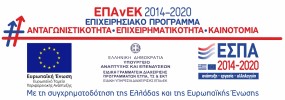Development of applications for DAEM
DAEM SA in collaboration with Geospatial Enabling Technologies (GET) developed the application of a Register of Topographic Charts (RTC). The Register was implemented in order to automate the procedures for submitting requests and geographical data to the Municipality and to improve the services provided by the Municipality of Athens to professionals and citizens.
The competent Directorates of the Municipality of Athens receive requests from interested parties, which are accompanied by topographic diagrams. For example, the Building Conditions Department of the Building Department, among its other responsibilities, is responsible for checking topographic diagrams for the issuance of building permits regarding their correctness in relation to the approved plan, the implementation of the approved road plan, building conditions and restrictions and its pension specifications. The topographic diagrams are submitted by the interested parties without any standardization regarding the syntactic dimension of their content, complicating the control process, but also their subsequent utilization. At the same time, topographic diagrams are compiled by the Municipal Services themselves (eg self-monitoring projects, autopsies), while the archive also has a large volume of analogous topographic diagrams. The lack of specifications for the compilation, the absence of a digital repository and a single – horizontal way of searching the topographic diagrams in the archive, the speeding up of the control process (and in some cases re-submission) were key issues addressed by the implementation of the Register.
The Register of Topographic Diagrams is an internet application, through which topographic diagrams are submitted to the Services of the Municipality. The application consists of the following basic components:
- Authentication and user management subsystem: supports login / registration via TaxisNet
- submission and automated control unit of submitted data: the data are checked automatically and in real time for their compliance (at editorial level) with the specifications
- geocoding unit: allows the identification of addresses, coordinates, numbers of Building Squares, based on the real numbering and naming of streets of the Municipality
- request management unit (control – reschedule – approval / rejection – file): allows the management of requests (undertaking, processing, post-obligation), the interaction of employee – submitter, keeping a history of (re) submissions and issuance of relevant documentary evidence.
Regarding the specifications for the compilation of topographic diagrams, the familiarization of both internal and external users with the specifications with which diagrams are submitted to the National Land Registry [Official Government Gazette 2216 / Β / 14-6-2018 as provided in article 40 of Law 4409/2016 (Official Government Gazette 136 / AD / 28.7.2016)] in combination with the need to adopt practices that will make the system attractive to external users, led to the use of these specifications as a reference point. The specifications of Official Government Gazette 2216 / Β / 2018 have been expanded and modified to cover the usual cases of information levels found in topographic diagrams. The following types are used for the format:
- DFX: file which must meet the above specifications. The contents of the file are dynamically controlled by the application, which notifies the user of possible failures and updates the central database when the content is compliant.
- PDF: the topographic diagram digitally signed. The file must be an accurate reproduction of the diagram. The system checks the validity of the digital signature.
- DWG: used to submit the original diagram from which the DXF is generated and which may contain additional objects (external references, etc.)
- ZIP: is optionally submitted to attach accompanying documentation, such as photographs, excerpts, etc.
In addition, each diagram submission is accompanied by descriptive information entered by the submitter and updates the Registry search engine. The data refer to the title, description, scale, type, date of drafting, reference system, verbal geographical designation (e.g. section / neighborhood), BB number, Address, comments / remarks. Some of these elements, such as the reporting system, serve the best identification / description of file diagrams, as as mentioned above the Registry will be used for the “submission” of file data by internal users.
The system was developed with the exclusive use, development and configuration of geospatial Free Software / Open Source Software (FOSS). The FOSS option has a strategic character for DAEM SA., as it allows the escalation of the system and its thematic expansion, on the other hand it can not be supported substantially with accumulated know-how and experience, while achieving significant resource savings. In addition, RTC allows the connection to third party systems, through a programming interface, allowing its updating.
The Municipality of Athens acquired a horizontal infrastructure, which will be the unit reference point for the storage and search of topographic diagrams. Through the infrastructure, the Municipality will be able to serve internal needs, reduce transactions with the public, preserve the existing archive and enrich it to meet the needs of the coming years. Creating a single file, transparent request management, saving resources, standardizing processes and data are key goals achieved with the adoption of the system.

TECHNOLOGY
- PostgreSQL
- Geoserver
- ReactJS
- OpenLayers
- QGIS
USEFULL LINKS
The applications are available for the internal users.
PROFILE
Name: Municipality of Athens Computer Development Societe Anonyme and Business Units of Local Authorities (DAEM SA)
DAEM the Computer Development Societe Anonyme and Business Units of Local Authorities of Municipality of Athens is the oldest company for the development of information systems and infrastructure in the Local Government, as it has been operating since 1983.
Website: http://www.daem.gr/daem/






